So I'd just like to apologize in blog form (because Blogger is a technology I do actually know how to use) to anyone who tweeted me and was rewarded with silence. But I still don't know how to use Twitter. Don't worry, I'm putting it on my to-do list.
Anyway this week we are in Djibouti, which is pronounced (don't laugh) "Ji-booty." OK, stop laughing. Yeah, it's kind of funny.
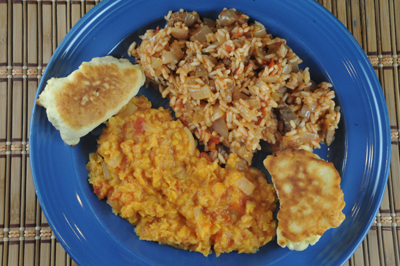 | |

I'm sure it won't surprise you to hear that Djibouti doesn't have a gigantic online presence, and recipes from that part of the world aren't exactly flooding the world's recipe sites. In fact, as far as I could tell, there is exactly one online resource for Djibouti cuisine. And guess what? She's a good one. I feel pretty lucky to have found her.
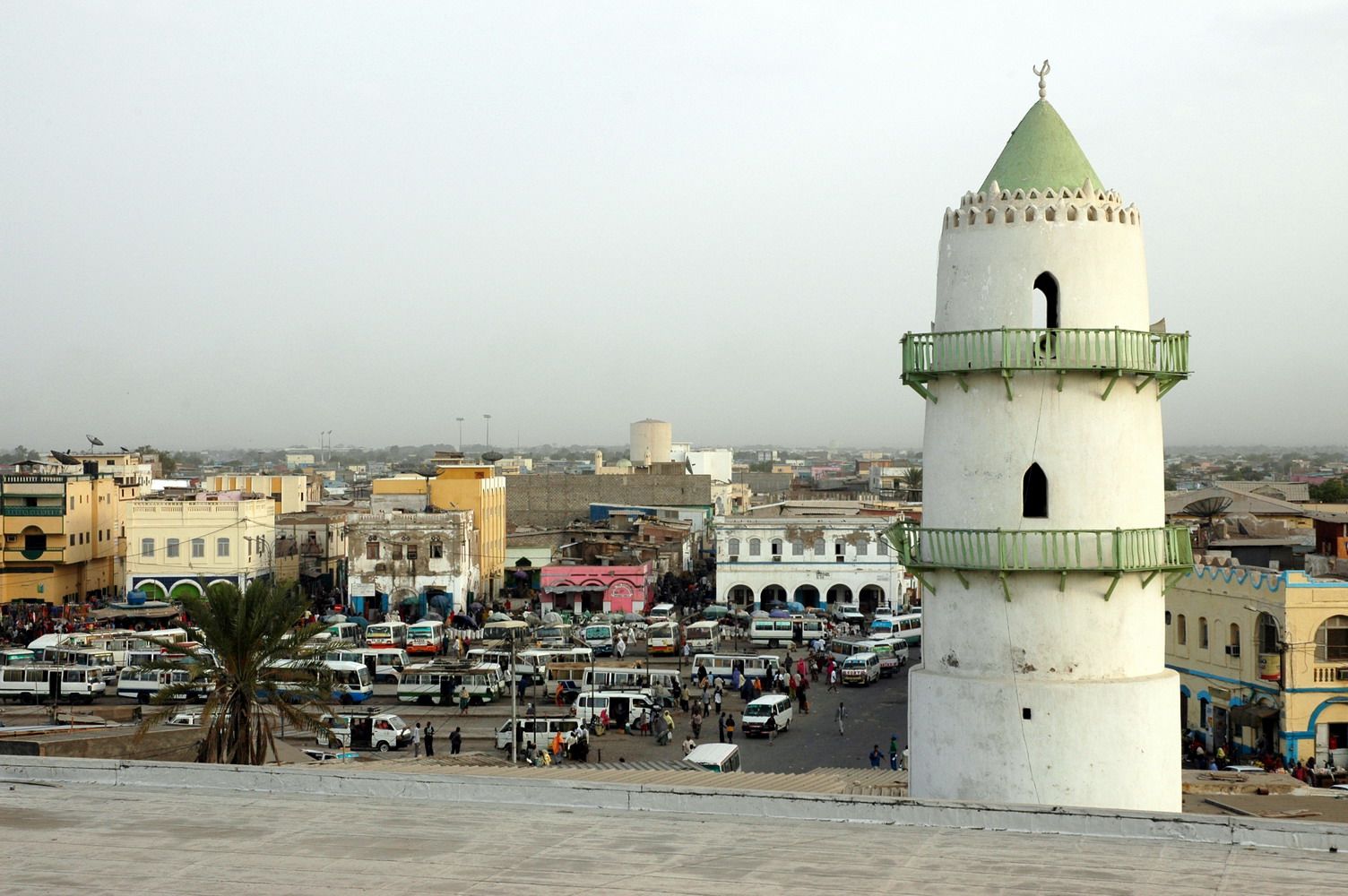 |
| Photo by Rachel Pieh Jones. |
Rachel Pieh Jones is an expat from Minnesota who lives in Djibouti and blogs at Djibouti Jones. What's more, she's the author of a cookbook called Djiboutilicious, which let's face it is an awesome title. It has an even awesomer subtitle: celebrating culture and cooking in a country as hot as your oven. The book features a few local recipes and other recipes that use locally available ingredients. If you're interested in this country in particular or even the region in general, this is a great slice-of-life resource focusing on food and culture.
So all of my recipes this week come from Djiboutilicious, and Rachel was kind enough to give me permission to share them with you. Here they are:
Isku Dhex Karis (Meat Pilaf)
The name of this dish literally translates to "Everything Mixed Together"
- 1 lb beef, goat or chicken, cut into bite-sized pieces (I used beef)
- 1/3 cup oil
- 2 onions, chopped
- 2 tsp cumin seeds
- 5 cloves garlic, minced
- 2 tomatoes, diced
- 3 cups cooked rice
- 1 1/2 tbsp tomato paste
Misir Wat (Red Lentils)
- 2 tbsp oil
- 1/2 onion, chopped
- 4 tomatoes, diced
- 1 1/2 cups orange lentils
- water
Maandazi (Khamir)
- 1 1/4 cup flour
- 2 tbsp sugar
- 1 tsp baking powder
- pinch salt
- 1 egg
- 1/4 cup milk
Cover the meat pieces with water and boil until cooked through. Drain, then add the oil and onions.
 |
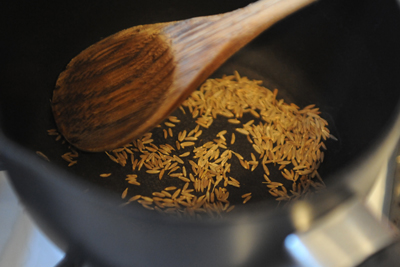 |
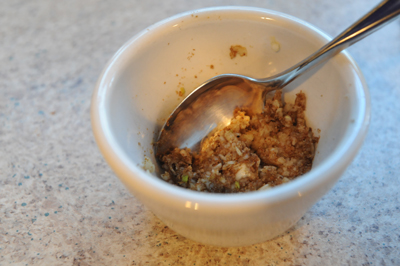 |
 |
First saute the onion in the oil, then add the tomatoes.
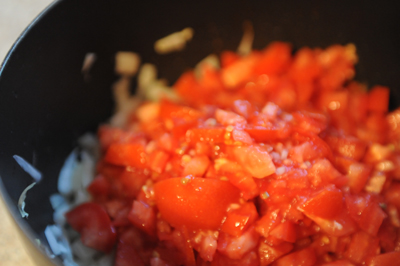 |
| Wow, this is a really awful picture. |
When the onions are translucent and the tomatoes are soft, add the lentils and the water. Boil until the lentils are tender (this shouldn't take more than 20 minutes). That's it!
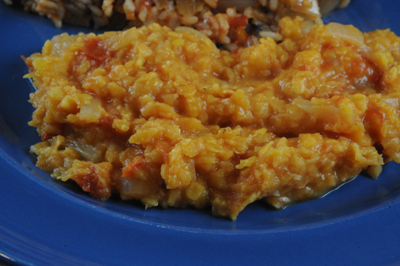 |
Mix the dry ingredients together, then add the egg and milk. Blend into a smooth dough and then roll out on a floured surface to a thickness of about 3/4 inch. Cut into 1-inch square pieces (mine were a lot wonkier than that).
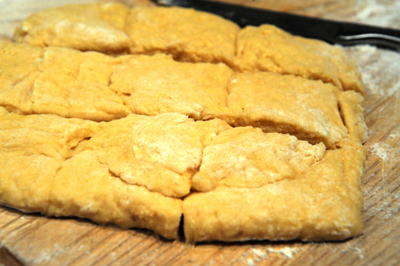 |
| Cut into sort of semi pseudo-squares. |
Fry the pieces in hot oil on both sides. When golden brown, remove from the pan and drain on paper towels.
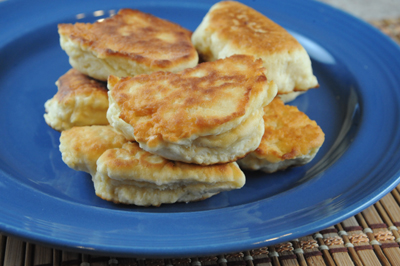 |
Martin and I liked everything. The maandazi had a nice, soft texture and a mildly sweet flavor that would have been good as a snack or, as I mentioned, for breakfast. I thought it went well with the rest of the meal though I don't know if that's really its traditional place. We also liked the isku dhex karis and the lentils, which were simple and hearty and nice on a cold day, which is pretty ironic when you consider that Djibouti doesn't have any actual cold days (once, in December, it got down to 63 degrees. Brrr!).
Anyway, another big thanks to Rachel for this meal and we're off to country the next.
Next week: Dominica (not to be confused with The Dominican Republic)
For printable versions of this week's recipes:











Becki - I had to laugh. I am one of your mystery Twitter PR team. Love how brave you are to take on this fun project. So, here is a little in-service on Twitter:
ReplyDeletehttp://www.momthisishowtwitterworks.com/
http://blog.tweetsmarter.com/twitter-community/three-movements-that-are-redefining-twitter/
http://behindtheweb.com/2011/12/01/how-to-gain-influence/
One of my favorite quotes:
“Facebook is where you lie to your friends. Twitter is where you’re honest with strangers.”
Cheers!
Dawn
On Twitter: @Dawn_Hawk
Thank you Dawn! I mean for being on my Twitter PR team and also for the Twitter links. :) Where's "Twitter for the clueless and lame?" LOL
ReplyDeleteBeautiful pictures of the food Becki! So glad it worked out, thanks for the link. I'll link to this post from my blog too.
ReplyDeleteThanks again Rachel! I could not have done it without you! :)
ReplyDeleteGreat post. However, the Maandazi is not a Djiboutian recipe. I know because I was born and raised there. It is a Kenyan recipe.
ReplyDeleteThanks. I just want to remind everyone that my goal is not to nail down the precise origins of any recipe I use but only to cook recipes that are traditional parts of the cuisine. Researching every recipe down to its origins would be impractical, so I'm afraid I have to trust outside sources to provide recipes--in this case, an American living in Djibouti gave me these recipes, so I can be fairly certain they are commonly eaten in Djibouti even if they might not have originated there.
ReplyDelete